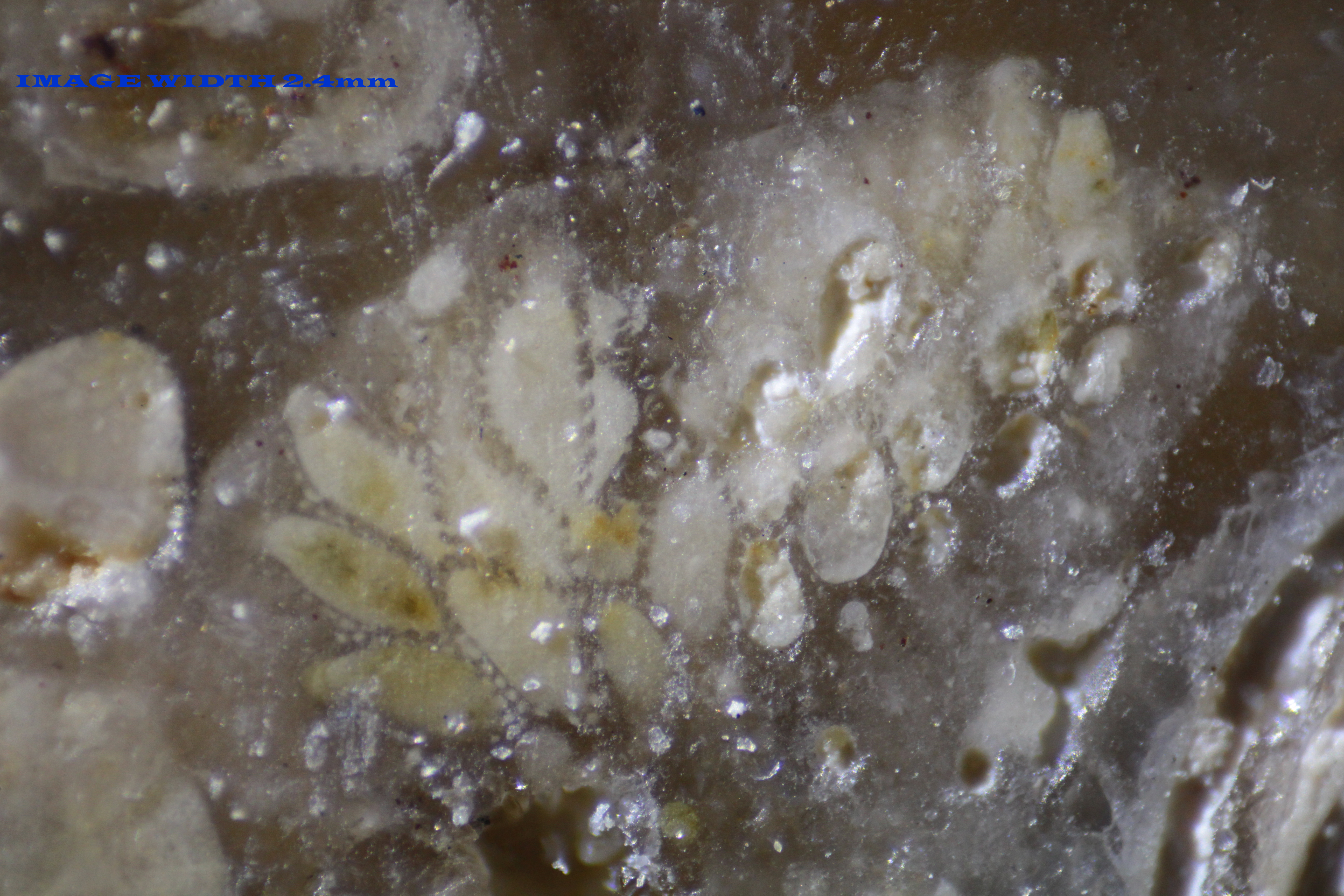Bartonian
The Bartonium ( in German language, usually shortened to Barton ) is in the geologic timescale, the third stage of the Eocene (Upper Middle Eocene, Paleogene ). The level of absolute age ranges ( geochronological ) of about 41.3 to about 38 million years. It follows the lutetium and is detached from the Priabonium.
Naming and history
The name is derived from the town of Barton-on -Sea ( now a suburb of New Milton, Hampshire, England). After this village, the Barton Clay Formation is named, which is open here. Stage and name were proposed by Karl Mayer- Eymar 1857.
Definition and GSSP
The stage begins with the first appearance of calcareous nannoplankton - type Reticulofenestra reticulata and ends just before the first occurrence of the calcareous nannoplankton - type Chiasmolithus oamaruensis ( corresponding to the base of nannoplankton zone NP18 ) or to extinction of Chiasmolithus grandis. The upper limit of Bartoniums can be uniquely defined by the extinction of dinoflagellate Rottnestia Borussica. A reference profile ( GSSP = Global Stratotype Section and Point) for the Bartonium has not yet been determined.
Magnetostratigraphy
The Bartonium magnetostratigraphisch begins with Chron 18r C and reaches the lower limit of C 17n.1n. It extends across the whole of Chron C18
Biostratigraphy
Planktonic foraminifera
The Bartonium includes the planktonic Foraminiferenzonen P 12 ( upper quarter ), the zone beck manni marked by the taxon Orbulinoides P 13, P 14, and the lower third of P 15, the beginning is defined by the first appearance (FAD ) of Globigerinatheka semiinvoluta.
Benthic large Foraminifera
Two benthic Großforaminiferenzonen can be reported in Bartonium, SBZ 17 with the taxa Alveolina elongata, Alveolina fragilis, Alveolina fusiform, Discocyclina Pulcra baconica, Nummulites perforatus, Nummulites brogniarti, Nummulites biarritzensis and above SBZ 18 with the taxa Nummulites biedai and Nummulites cyrenaicus.
Calcareous nannoplankton
As calcareous Nannoplanktonzonen are to lead in the 17 Bartonium NP 16 (upper third ) and NP. NP 17 begins with the extinction ( LAD) of Chiasmolithus solitus and then reaches up to the lower Priabonium.
Dinoflagellate cysts
Zones D 10 (upper half) and D 11 are reported for the Bartonium Based on the dinoflagellate cysts. The first publication of Rhombodinium draco and the disappearance of Areoligera tauloma define the beginning of the subarea D 10b. With Rhombodinium porosum sets D 11 a, simultaneously disappears Corrudinium incompositum. The initial appearance of Wetzeliella simplex defines the beginning of the subzone D 11b. The upper limit of Bartoniums coincides with the extinction of Rottnestia Borussica.
Land mammal biozones
The Bartonium is identical to the land mammal stage MP 16 (or Lautricense - Siderolithicum zone). It has, separated by continents, the following biozones (Land Mammal Mega Zones):
- Europe ( ELMMZ ) Robiacium (upper two-thirds)
During the Robiaciums meet for the first time the taxa Lophiodon lautricense ( defining the beginning of MP 16) and Leptolophus stehlini and Palaeotherien Palaeotherium castrense and Palaeotherium robiacense on. Families Anthracotheriidae, Cainotheriidae and Talpidae Further appear. The taxa Lophiodon leptorhynchus, Leptolophus stehlini, Palaeotherium cosetanus, Palaeotherium robiacense and Propalaeotherium (the latter marks the end of Robiaciums ) die out, as are the families Lophiodontidae and Hyrachyiidae.
- North America ( NALMMZ ): Uintum (only top section) and Duchesneum
At the beginning of Duchesneums ( Duchesneum 1) appear Mesohippus and the families Amphicyonidae, Anthracotheriidae, Canidae and Rhinocerotidae. The first appearances of Ischyromys marks the beginning of Duchesneum 2 At the beginning of Duchesneum 1 Omomys disappear, the family of Hyrachyiidae, the orders of Dinocerata and Taeniodontia. At the end of the Duchesneums Nyctitheriidae and the subordination of Plesiadapiformes dying out.
- Asia ( ALLMZ ): Sharamurunium
Occurrence
The Bartonium occurs in the following Sedimentationsräumen on (ordered from young to old):
- Hampshire Basin: Becton Sand Formation, Chama Sand Formation and Barton Clay Formation
- Belgian Basin: Lede Formation
- Paris Basin: Auversien with the Calcaire de Saint Ouen and the Sables de Beauchamp
- North German Plain: Sevind lineup
- Oberrheintal: Lymnaeenmergel
- Helvetic: Globigerina marl and guarantors layers. In Switzerland Stadschiefer and Hohgant - slate, in Upper Bavaria Stock Latvians and granite marble.
- Upper Italy: Promina layers and layers Roncà
- Egypt: Mokattam Formation
- Pakistan: Kirthar Formation










